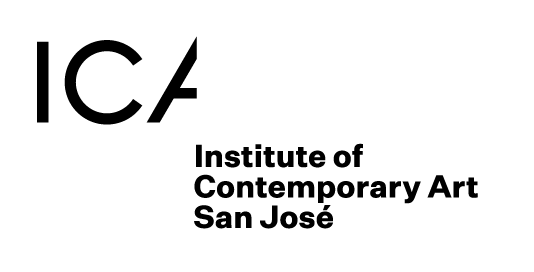The Landscape of War
November 10, 2007 – January 19, 2008
The Landscape of War exhibition illustrates the complex politics of war and our relationship to it.
The Landscape of War exhibition illustrates the complex politics of war and our relationship to it. Curated by Anne Veh and largely inspired by the writings of Rebecca Solnit, this significantly relevant exhibition expresses a message that is both haunting and confrontational, challenging the viewer to fully consider the multi-faceted effects of war. Many of the artists in this exhibition provide essential and poignant political critique to inspire thoughtful dialogue. Enrique Chagoya re-maps the world in RoadMap, depicting the U.S. disproportionately larger than any other country. Michael Arcega cleverly plays with language and materials that are loaded with political associations. His sculptures of hand grenades and weapons titled Terrorice are made out of rice, the grain that the US gives as aid to war-torn and developing countries.
Pamela Wilson-Ryckman’s delicately painted watercolors lure the viewer into a seemingly beautiful landscape only to reveal volatile political gatherings, collapsed buildings in ruin, and apocalyptic street scenes. In contrast to these catastrophic visions, Fanny Retsek symbolically counts each death in Iraq and each gallon of oil she consumes with individual hatch marks on paper. By making the exploits of war personal, Retsek implicates herself in the world events. Michael Light’s ongoing aerial photographic investigation, Rancho San Pedro 04.28.06, exposes the infrastructure of a culture dependent on oil. The images unveil views of oil extraction, refining, global shipping, automobile transportation, and land use in Los Angeles.
Wartime not only changes the physical environment but also creates a culture of fear, corruption and secrecy. Mark Klett’s series of photographs entitled The Wendover Project, documents the forgotten and dilapidated landscape that once served as the secret training ground for WWII bomber crews, including the 509th Composite Group that dropped the atomic bomb. Christoph Draeger further illustrates the catastrophic consequences of the bomb with a puzzle that depicts the devastated landscape of Nagasaki. Artist Trevor Paglen provides a glimpse into a world of secrecy with his ongoing investigation and documentation of secret military programs. Using astronomical equipment, Paglen’s large-scale photographs are taken from a distance of up to 22 miles and depict Area 51, an off-limits military installation in the Nevada desert.
The Landscape of War is sponsored in part by Deborah and Andy Rappaport.
November 10, 2007 – January 19, 2008
Opening Reception: November 9, 6-8 pm
Mike Arcega, Sandow Birk, Enrique Chagoya, James Drake, Christoph Draeger, Mark Klett, Michael Light, Trevor Paglen, Ligorano/Reese, Fanny Retsek, Pamela Wilson Ryckman
Landscape of War: Transformation of the Familiar
Panel Discussion: November 11, 3 – 5 pm
Booksigning and reception: 5 – 6 pm
Moderated by author Rebecca Solnit, the discussion will contemplate how we can reclaim public space and create meaningful resistance in this time of war.
